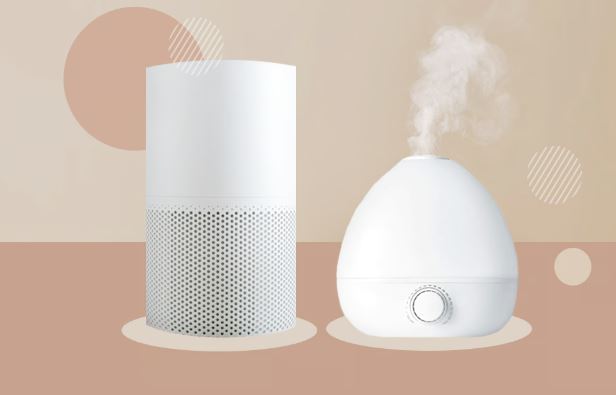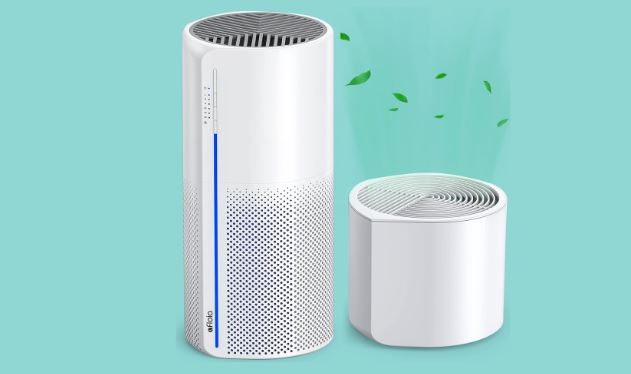Air Purifiers for Pet Owners: Say Goodbye to Dander and Odor
Wiki Article
In today's health-focused society, the air we breathe in has become a prominent focus for individuals across the globe. With growing concerns over air pollution and a greater awareness of the impacts of indoor air quality on our health, it's no surprise that the demand for air purifiers is on the rise.
Air purifiers are appliances that eliminate airborne contaminants in a given area, promoting healthier indoor air. They are ideal for people with allergies, asthma, or other respiratory issues as they can significantly reduce the presence of allergens, pollutants, and irritants in the air. Even healthy individuals can benefit from air purifiers, as they provide reassurance and safeguard against airborne diseases.
This article will delve into the fascinating realm of air purifiers, discussing the perks they offer, the variety of options on the market, essential factors when choosing a purifier, and maximizing your air purifier's potential. By the end, you should have a thorough grasp of air purifiers and be able to choose wisely about whether investing in one is the smart move for you and your loved ones.

Understanding Air Pollutants and Their Impact on Health
To understand why air purifiers are essential, it's vital to understand the variety of contaminants they address and the possible effects of prolonged exposure.
Indoor air pollutants can be generally classified into the following three categories:
- Particulate Contaminants: This includes tiny solid and liquid particles suspended in the air. Examples include dust, smoke, pollen, pet dander, mold spores, and more. Particulate matter can cause respiratory issues and trigger allergic reactions.
- Volatile Organic Compounds (VOCs): VOCs are gases emitted from various solids or liquids. Sources of VOCs include aerosol sprays, cleaning products, paints, and pesticides, among others. Exposure to VOCs can lead to eye, nose, throat irritation, headaches, and stomach discomfort.
- Understanding Biological Contaminants: These include various microorganisms, including bacteria, viruses, mold, and mildew. They can cause a range of health issues, from minor allergies to serious infections.
The consequences of exposure on human health can differ considerably. For individuals with respiratory conditions or compromised immune systems, exposure to indoor air pollutants can lead to significant health complications. For those in good health, chronic exposure to certain pollutants can impact respiratory health and overall well-being over time.

Unraveling Air Purification Technology
Air purifiers use a variety of physical and chemical processes to effectively eliminate contaminants. Understanding the fundamental processes employed by purifiers will help you appreciate their effectiveness and the different types available on the market.
Here are the core processes and cutting-edge technologies used in air purifiers:
- The Power of Mechanical Filtration: This is the predominant technique used in air purifiers. It involves using specialized filters to capture particles as air is forced through the purifier. The filter composition can differ, each designed to target specific particle sizes and types. For example:
- Initial Defense: Pre-filters: These are usually the first line of defense, catching larger particles like dust and hair.
- HEPA (High-Efficiency Particulate Air) filters: HEPA filters are remarkably proficient at capturing microscopic particles, including pollen, dust mites, and some bacteria and viruses. To be labeled a genuine HEPA filter, it must trap a minimum of 99.97% of particles down to 0.3 microns in size.
- charcoal filtration: These filters are designed to effectively remove odors, VOCs, and gaseous compounds.
- Ionizers: Charging Ahead: Ionizers use charged particles to create an abundance of negative ions, which latch onto airborne particles. The charged particles then stick to nearby surfaces or are attracted back to the purifier.
- Ozone: A Powerful Purifier: Some air purifiers use ozone as a powerful cleaning agent. While effective, excessive ozone exposure carries risks so these types of purifiers should be used with moderation and in well-ventilated areas.
- Ultraviolet (UV) Light: UV light can be used to neutralize bacteria, viruses, and mold spores. UV light and filters: a dynamic duo to eliminate particles, while UV light ensures any remaining biological contaminants are destroyed.
The Ultimate Air Purifier Guide
With a wide array of options available, selecting the right air purifier can be a daunting task. It's important to consider a range of criteria to ensure you make the best decision for your unique requirements and space.
Here are some essential factors to weigh:
- Room Size: Air purifiers are typically rated according to room size, so it's important to choose a model that can effectively handle the square footage of the room. Most purifiers will list a maximum room size or a Clean Air Delivery Rate (CADR), which indicates the volume of filtered air delivered per minute.
- Understanding Contaminants: Identify the specific pollutants you want to target. If you suffer from allergies, look for a purifier with a true HEPA filter. For reducing unwanted smells, consider a model with a carbon-based filter. If you're concerned about bacteria and viruses, a purifier with UV-C light might be best.
- Whisper-quiet Performance: Air purifiers can produce varying levels of noise, so if you plan to use it in a serene environment, look for models with a low-noise or sleep mode.
- Maintenance and Costs: Consider the long-term expenses and upkeep of the purifier. HEPA filtration systems may need periodic replacement, depending on use and environmental factors. Remember to budget for filter replacements when making your choice.
- Smart Innovations: Many purifiers offer smart features like air quality sensors, automatic modes, and Wi-Fi connectivity, allowing wireless control and real-time data. These features can improve your purifier's performance and ease of use.
Maximizing the Benefits of Your Air Purifier
Once you've made your selection and installed it, there are several things you can do to ensure it operates at peak performance and delivers the greatest advantages:
- Place it in the Right Location: Position your purifier in an central location, free from obstacles, to ensure optimal airflow. Avoid placing it near external openings as drafts can disrupt the purifier's effectiveness.
- Round-the-clock Operation: For the best results, it's recommended to run your purifier continuously. Many models have energy-saving features or smart modes that adjust the fan speed based on air quality, so you can maintain fresh air without excessive energy costs.
- Maintain the Filters: Regularly follow the manufacturer's filter replacement guidelines. Over time, filters become saturated with particles, affecting efficiency. Set a reminder for filter changes so you don't forget.
- Limiting Indoor Pollutants: Alongside using an air purifier, take steps to reduce indoor pollutants. This could include vacuuming, dusting, choosing natural cleaning alternatives, and limiting aerosol and chemical products. Report this wiki page